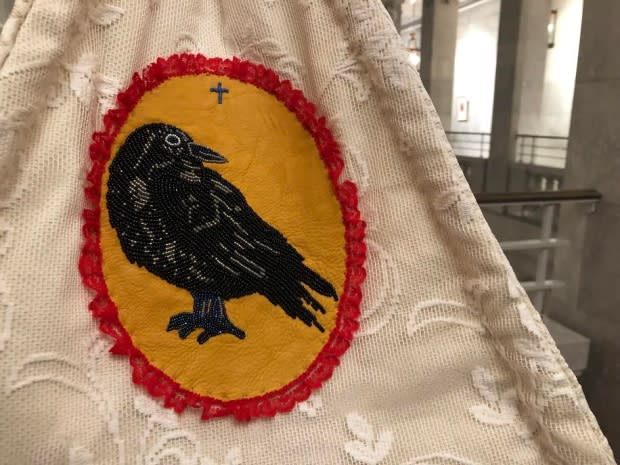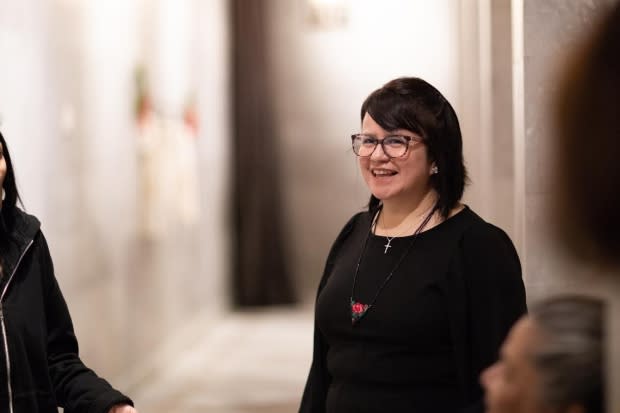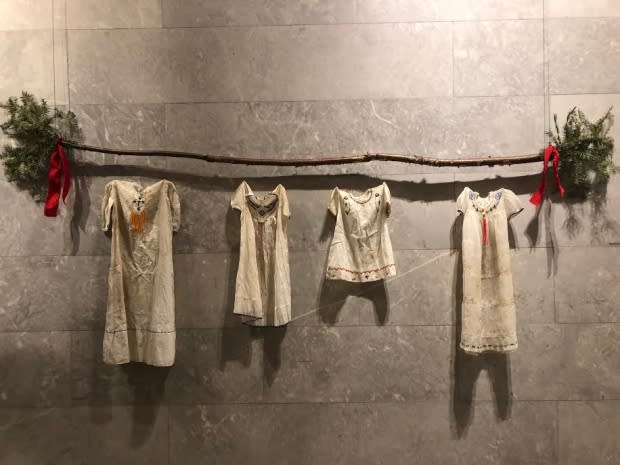Algonquin artist uses beadwork and found objects to explore stories of resilience
For emerging Algonquin artist Jobena Petonoquot, making art is about breaking stereotypes about Indigenous Peoples.
It's a theme prevalent in her first solo exhibition Rebellion of my Ancestors, on display at the Conseil des arts de Montréal until Jan. 15.
"My main goal in life is to teach people about our people, that I'm not a stereotype and that I'm a human being," said Petonquot, who is from Kitigan Zibi, about 200 km northwest of Montreal.
"We're not just a homogeneous entity. We're not all the same. Each Indigenous person has their own experience."

Using beadwork
The exhibition explores stories of resiliency within Indigenous communities through beadwork, found objects, printmaking and photography.
"The reason why I use beadwork so much is because for me, even though beadwork is really beautiful, the thought of sewing with a needle is kind of like a violent act," said Petonquot, who learned how to bead when she lived in Kawawachikamach, Que., near Schefferville.
"For me, it's a symbol for life itself. Life isn't always positive all the time."
The work is a result of the Montreal Museum of Fine Arts and the Conseil des arts de Montréal's Impressions residency. Although the two-month residency was for research, Petonoquot said she made a point to bead in the museum every Friday afternoon.
"I thought that it was very important to invade the space of the museum," she said.

"There are a few Native artists that are featured in the Montreal Museum of Fine Art but a lot of the paintings, particularly in the Canadian collection, they're about Natives but Natives didn't make those paintings."
First Indigenous artist selected for residency
Petonoquot was the first Indigenous artist selected for the Impressions residency, which has served as a springboard for emerging artists representing the city's cultural diversity since 2013.
"The time that she had at the museum helped her to to do a lot of research about the Victorian esthetic and she used it in her new projects," said Geneviève Goyer Ouimette, the Gail and Stephen A. Jarislowsky curator of Quebec and Canadian contemporary art.
"She's interested in her traditions. Not just to remake it, but to reinvent it and to shake it a bit. This is specific to contemporary art artists."
One of those works is Resilient Repugnance (2018), which features four vintage Victorian-era dresses decorated with beadwork. Petonoquot buried them in her backyard and unearthed them to address her views on the relationship between colonialism and Christianity.

"Christianity was used as a mechanism to try to commit cultural genocide on our people," she said.
"Unearthing the dresses was very important because I thought I would be remembering all the hurt from all the harm that was done to our people, and displaying them to remind people that this is what happened to us."

